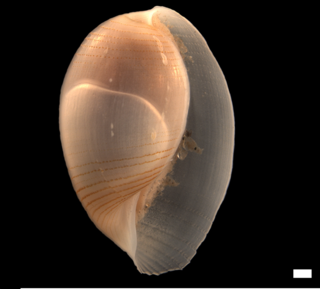
Physalia is a genus of the order Siphonophorae, colonies of four specialized polyps and medusoids that drift on the surface of the Atlantic, Indian and Pacific oceans. Although these organisms look like a single multicellular organism, each specimen is actually a colony of minute organisms called zooids that have to work together for survival. A gas-filled bladder resembling a blue bottle provides buoyancy, and long tentacles of venomous cnidocytes provide a means of capturing prey. A sail on the float, which may be left or right-handed, propels Physalia about the sea, often in groups. These siphonophores sometimes become stranded on beaches, where their toxic nematocysts can remain potent for weeks or months in moist conditions. Both species of this siphonophore resemble a jellyfish in appearance, with their gas-filled float and cluster of polyps beneath, which can hang up to 30 or 165 feet below the surface of the sea.

Amblyseius is a large genus of predatory mites belonging to the family Phytoseiidae. Many members of this genus feed on other mites such as red spider mites, and also on thrips. Several species are popular as biological control agents to control these pests.

Physalia utriculus, also called blue bottle or Indo-Pacific Portuguese man-of-war, is a marine hydrozoan of the order Siphonophora found in the Indian and Pacific Oceans. A gas-filled bladder allows it to float on the surface, propelled by currents, tides, and by a sail at the top of the bladder. A single long tentacle of venomous cnidocytes, hanging below the float, provides the animal with a means of capturing prey. They can cause painful injuries to humans when encountered at beaches, on which they are sometimes stranded in large numbers.
Amblyseius ampullosus is a species of mite in the family Phytoseiidae.
Amblyseius andersoni is a species of mite in the family Phytoseiidae. It is found in Europe.
Amblyseius bellatulus is a species of mite in the Phytoseiidae family that is native to Taiwan. It was described by Tseng Yi-Hsiung in 1983. Following his retirement, Tseng's collection of more than 20 holotypes of Taiwanese phytoseiid fauna were lost. A. Bellatulus re-described in 2017 by a team from National Taiwan University led by Liao Jhih-Rong, who collected new specimens of phytoseiid mites from the original locale used by Tseng as well as other areas throughout Taiwan.
Amblyseius caudatus is a species of mite in the family Phytoseiidae.
Amblyseius curticervicalis is a species of mite in the family Phytoseiidae.
Amblyseius faerroni is a species of mite in the family Phytoseiidae.
Amblyseius fernandezi is a species of mite in the family Phytoseiidae.
Amblyseius lemani is a species of mite in the family Phytoseiidae.
Amblyseius omaloensis is a species of mite in the family Phytoseiidae.
Amblyseius sparsus is a species of mite in the family Phytoseiidae.

Amblyseius tamatavensis is a species of mite in the family Phytoseiidae.
Typhlodromips swirskii, the Swirski mite, is a species of predatory mite in the family Phytoseiidae. It is used in biological pest control of western flower thrips in greenhouse or indoor grown crops.

Amphilectus utriculus is a species of demosponges found in the Atlantic waters west of Mauritania, western Africa. The species name utriculus is Latin for "small water bag", referring to the hollow, flattened shape.

Roxania is a genus of gastropods belonging to the family Alacuppidae.





